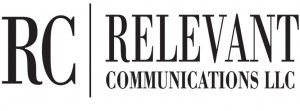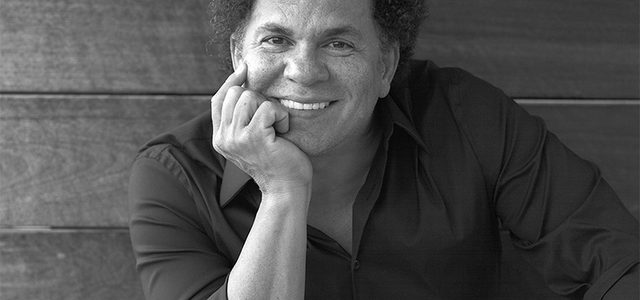Celebrity artist Romero Britto’s work is ‘full of life’
Reprinted from Las Vegas Review Journal
So much for the tortured-artist stereotype.
One look at artist Romero Britto’s work and you know the cliche definitely doesn’t apply to him.
Not on canvases bursting with hearts and flowers, rendered in bright primary colors, or pop images of playful people with big eyes and bigger smiles. Not in sculptures that spell out “LOVE” and other words to live by.
The Brazil-born, Miami-based artist, 53, revels in “images of hope and happiness,” he says.
And now, those images will be on public display in Las Vegas.
The Gallery of Music and Art, in the Forum Shops at Caesars, will exhibit 20 paintings and a dozen sculptures by Britto, who’ll be at the gallery from 6 to 9 p.m. Tuesday for a meet-and-greet.
“I wish I could paint as I was talking,” Britto says in an on-the-run telephone interview from his Miami base. “I am there to meet my collectors.”
It may be Britto’s first exhibition in Las Vegas, but he’s hardly a stranger to some locals.
Andre Agassi, for example, whose Grand Slam for Children events (benefiting the Agassi Foundation and Agassi’s college preparatory academy) have included auctions of Britto artwork.
Or Larry Ruvo, who’s known Britto since the artist’s big breakthrough: Absolut Vodka’s “Absolut Art” campaign alongside such established artists as Andy Warhol and Keith Haring.
Ruvo, senior managing director of Southern Glazers Wine & Spirits, met Britto on a supersonic charter flight Absolut sponsored to promote the campaign.
“We just bonded,” Ruvo said of Britto in a separate telephone interview. “I loved his art. And he became, not a good friend, but a great friend.”
That friendship includes Britto designing posters for and contributing artwork to such local causes as the annual UNLVino scholarship fundraiser and Keep Memory Alive’s Power of Love gala, which benefits the Cleveland Clinic Lou Ruvo Center for Brain Health.
Every time Britto signs his name on a canvas, “he knows he can make money,” Ruvo says, “and he gives it away for great causes. He’s touching a lot of lives through his art.”
Britto’s donations to local charities have resulted in “millions of dollars” raised, according to Ruvo. “He’s not like the temperamental artist — he just shows up.”
For Britto, the Absolut campaign was “one of the best things to happen” to him, because it opened doors to other products.
Since then, the artist has worked with Coca-Cola (and Pepsi), most recently at the 2016 Rio Olympics, where he designed a commemorative Coke bottle and souvenir pins, to say nothing of a Rio-themed Barbie doll. He’s designed Swatch and Movado watches. When MINI Cooper entered the U.S. market, Britto painted a car.
And when Cirque du Soleil performed a pregame show in 2007 at Super Bowl XLI, Britto created moving, three-dimensional pieces resembling palm trees as a backdrop for the acrobatic Cirque routines.
“I love working with corporations,” Britto says. “It brings art to the masses in a very special way,” attracting “a huge audience.”
At his Miami base, Britto has more than a hundred people working “on my team,” from assistants who apply colors to his canvases to those who handle shipping and packing.
“It’s one of the biggest operations in the country,” he notes. “I never dreamt art would take me so far.”
The artist’s journey began in Recife, Brazil, where he grew up in “a very simple family” with seven siblings.
Ruvo remembers when Britto described his beginnings to Ruvo’s daughter during a visit to his Miami studio.
“ ‘I don’t use dark colors — my pictures are full of life. I grew up outside of Rio, in real slums’ ” Britto described as “ ‘all depressing, dark and dreary,’ ” Ruvo recalls.
Ruvo later visited Britto’s birthplace and found it “dark, scary — a great place to be from.”
Britto discovered art when he was a child, drawing in notebooks and painting on newspapers after a brother gave him some paints.
Seeing the works of Picasso, Braque, Matisse in books piqued his interest. Although some of Picasso’s work “was violent, I liked the composition,” Britto says, along with “the very beautiful colors of Matisse.”
Despite his interest in art, Britto thought law school would be more practical. After starting his third semester, however, he opted to follow his artistic impulses, studying first in Europe and then moving to the U.S., where he discovered the “very funny” work of Warhol, who “thought everyday things could be art.”
Whether working on corporate projects or his own paintings, Britto follows the same approach: “sharing happiness, love, good vibes,” he explains. “I’m still working on my style. Every day, I learn something.”
And every day, “I’m feeling more and more comfortable about standing in front of a canvas,” Britto adds. “It can be intimidating, standing in front of a blank canvas.” Yet, for him, “the best moment is when I’m sitting or standing in front of a canvas.”
Some criticize what Britto puts on those canvases. (A New York Times article, for example, noted that Britto’s work “virtually explodes with warmth, optimism and love — Matisse channeling Picasso by way of Hello Kitty.”)
But, like Ruvo, Britto’s collectors respond to the artist’s vibrant, whimsical works.
“He’s eclectic, he’s fun, he puts a smile on my face,” Ruvo says.
“I think a lot of people relate” to his art, Britto says, citing the “pure quality” of his work.
“People that (don’t) have good feelings are not attracted by my art,” he concludes. “People who want to be attracted by good things, positive things” will experience “special and wonderful vibes.”
Read more from Carol Cling at reviewjournalcom. Contact her at ccling@reviewjournal.com and follow @CarolSCling on Twitter.


Comments are closed.